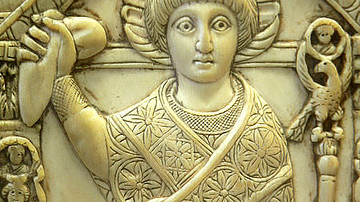
The Twelve Tables (aka Law of the Twelve Tables) was a set of laws inscribed on 12 bronze tablets created in ancient Rome in 451 and 450 BCE. They were the beginning of a new approach to laws which were now passed by government and written down so that all citizens might be treated equally before them.
Although not perhaps a fully codified system, the Twelve Tables was a first step which would allow the protection of the rights of all citizens and permit wrongs to be redressed through precisely-worded written laws known to everybody. Consequently, the Roman approach to law would later become the model followed by many subsequent civilizations right up to the present day.
Creation of The Twelve Tables
According to tradition, in 451 BCE a committee, the decemviri, were, following public pressure, given the task of composing a law code which would better represent the interests of the ordinary people (plebeians) and reduce the undue influence on Roman law of the aristocrats (patricians) and priests (pontifices). These latter had exclusively sat on a council which interpreted the law as they saw fit. In preparation for this responsibility, a delegation of three men was sent to Athens where they studied the laws of the celebrated lawgiver Solon (c. 640 – c. 560 BCE). Then ten men, all patricians, were given consular power (imperium) and permitted to draw up a list of laws which they considered most needed and useful.
That is the traditional view of events, although, perhaps more realistically, the composition of the Tables was an attempt by the elite to better govern themselves and prevent abuses within their own social group. In any case, the result was a list of written laws (legibus scribundis) presented on ten tables and two more were added the following year to bring the total to twelve. As a consequence, laws became statute, that is they were made only after first being decided on by a legislative body and were no longer based on mere custom and tradition.

The Laws of the Twelve Tables
The exact reason why the Tables were drawn up may have been lost in the mists of time but once written their content was consistently referenced in later Roman written works. Unfortunately, the tablets themselves have not survived, destroyed, according to tradition, when Rome was sacked by the Gauls in 390 BCE. From some remaining fragments and those references in literature, it is possible to identify at least some specifics.
The list of laws seems to have covered most areas of private law and concentrated on relations between individuals (as opposed to individuals vs. the state or the rights of non-citizens) and thus is more a list of civil actions and penalties than a full, all-encompassing law code. It also largely dealt with areas relevant to an agricultural state. For example, the crime of arson was punishable by the death penalty (poena capitis), in this case by burning. The crime of using magic on crops was also punishable by death, this time by a form of crucifixion. Lesser penalties for property damage were banishment from Rome, loss of citizenship, and, for being an accessory to a crime, confiscation of property. Settlements could also be made by paying compensation to the plaintiff and thus avoiding court.
Other areas covered were procedural such as the ius vocation which was a private summons. If a plaintiff communicated to the accused they wished to bring a case against them then the accused was obliged, and could even be physically forced, to appear before a magistrate. Family law was also a part of the Twelve Tables with rules regarding marriage, guardianship, inheritance, and funerals prevalent.
Amendments
Problems of practical application were soon apparent when some patricians refused to submit to the statutes of the Twelve Tables. The ordinary people were also now startled to see, for the first time, many of the rules which had already been in place but not made quite so transparent until now. These factors led to an uprising by the plebeians in 449 BCE and the forced resignation of the decemviri. Rome's constitution was revised, the institutions of tribunes and consuls were reinstated, and the Twelve Tables became the basis of Roman law. The actual bronze tablets were set up in the Forum of Rome for all citizens to see, and Cicero records that students studied them as a part of their education.
In addition to these early problems, some specific laws in the original tables were not very long-lasting such as that which prohibited intermarriage between patricians and plebeians. This law was cancelled in 445 BCE with the enactment of the lex Canuleia. Other laws within the Twelve Tables were modified over time and, from the 3rd century BCE, they were steadily replaced by laws more relevant to the evolving Roman society and the dramatic expansion of the Republic.
Legacy
Although some scholars insist the Twelve Tables were not quite the 'all equal before the law' that tradition has claimed and that they were not enough alone to be defined as a complete law code, they, nevertheless, indisputably set the foundation for what would become a system of fully codified law in the Roman world. The decemviri must also be credited with creating laws which were of practical value, separated from any religious consideration, visible to all, and outlined in precise language with explicit definitions. Thus, the Romans created an approach to legal matters which would be copied by countless other societies and governments ever since.





